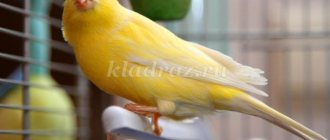Games on the sound culture of speech in the preparatory group
Games on the sound culture of speech become significantly more complex from group to group. In the preparatory group, children should already have a developed speech culture, however, as practice shows, in preparatory groups less than 20% of children have a sufficient speech level.
At an older age, preparation for school comes to the fore. Children can already easily determine the place of a sound in a word and select words based on their sounds. Therefore, on such a basis, the teacher can easily build further work, for example, include exercises for sound analysis of words.
Note! Work on developing sound culture continues in primary schools.
Summary of a lesson on speech development in the middle group of a preschool educational institution. Sound F
Summary of a lesson on speech development in the middle group Topic: “Sound culture of speech: sound [f].”
Goal: to practice clear and correct pronunciation of the sound [f] in syllables, words, phrases; teach children to identify the sound [f] in words by ear, to intonate it in a word; practice the correct use of the noun number in the nominative and genitive cases; develop intonation expressiveness of speech. Material : letter, toy hedgehog, bag of treats (grass, doll, mushroom, nut, ball, apple), key, hedgehog masks, images of a house, grandfather, woman, mice, 3 hedgehogs, box. Dictionary : hedgehogs-hedgehogs, mice-mice, T-shirt, apron, jacket, scarf, shoes.
Progress of the lesson.
There's a knock on the door. The postman comes in and gives the children a letter. Educator : Guys, look, they brought us a letter. What is written there? (The teacher takes out a letter with a riddle and reads it). Educator: He walks, carries needles on himself, curls up in a ball, no head, no legs. Who is this? Children : Hedgehog. Educator : That's right, it's a hedgehog. Here he is, guys, hiding from us. Let's listen to a song about a hedgehog. The song “Little Hedgehog” is playing. A small hedgehog, four legs, A hedgehog walks through the forest, sings a song, Fu-you, fu-you, fu-you, fu: I carry a leaf on my back, I’ll bring everything you need! A small hedgehog, four legs, a hedgehog walks through the forest, sings a song: Fu-you, fu-you, fu-you, fu, I carry a leaf on my back, I am the strongest in the forest, - I’ll bring everything you need! Educator: What song does the hedgehog sing? Children : Fu-you, fu-you, fu-you, fu (choral and individual answers). Educator: Guys, look at the hedgehog. That he has? Children: Head, paws, tail, needles. Educator : What does a hedgehog eat? Children : Mushrooms, apples. Educator: The big hedgehog has a long song. He sings “ffffff”. Let's sing together. (Children repeat) Educator: When hedgehogs like something, they say “fi-fi-fi,” and when they don’t like something, they say “fu-fu-fu.” What do hedgehogs say when they like something? (children's answers). And when hedgehogs don’t like something, they say what? (children's answers). The hedgehog took a long time to get to us and was hungry. Let's feed him. Didactic game "Magic Bag". The child takes a treat out of the magic bag, shows it to the other children, and they try to guess whether they liked the treat, responding with certain onomatopoeia “fi-fi”, “fu-fu” (grass, doll, mushroom, nut, ball, apple). At the end of the game it turns out that hedgehogs like to eat. Educator : The hedgehog ate and now wants to play with you. Outdoor game "Funny Hedgehogs". Educator : I have a magic key. You will be groovy hedgehogs. I’ll lead you on and you’ll sing a song: “f-f-f” (the teacher puts hedgehog masks on the children). Educator: The hedgehog really liked playing with you. Now listen to the story about hedgehogs. Educator : On the edge of the forest, in a small hut, there lived a grandfather and a woman. And in the forest, not far from the house, there lived three hedgehogs. Their names were Fuk, Fok, Fek. What were their names (choral and individual answers). Hedgehogs guarded the forest. What were the hedgehogs doing? (children's answers). And, walking along the forest paths, they sang songs. Here is one of them: There are no better watchmen in the world than us, forest hedgehogs. There are no better guards in the world than us, forest hedgehogs. One day, mice snuck into the hut where the grandfather and woman lived. Even during the day they walked around the house and squeaked. The old people decided: “Let’s invite the hedgehogs. Let them drive away the mice." Educator : What did the old people decide to do? (children's answers). And so the hedgehogs go to fight with the mice. Phuc is ahead. Who's ahead? (children's answers). Behind him is Fok. Who's behind Phuc? (children's answers). And behind is Fek. Who's behind? (children's answers). The hedgehogs follow each other, sing a song: We are walking along the path - Fuk, Fok, Fak! Let's go to my grandparents, Fuk, Fok, Fak! Let's go to my grandparents, Fuk, Fok, Fak! And quietly we sing, Fuk, Fok, Fak! (The teacher repeats the song, the children say the names of the hedgehogs in chorus). Educator: So the hedgehogs drove away the mice and set off on the way back, also singing the song: We are walking along the path, Fuk, Fok, Fak! And quietly we sing, Fuk, Fok, Fak! (children finish the names) Educator : Guys, look, the hedgehog brought a box for us, let's see what's in it. Children : Treat. Educator: Let's say thank you to the hedgehog for the gift. Children : Thank you. Educator : And it’s time for the hedgehog to leave, let’s tell him “Goodbye!” Children : “Goodbye!” Educator: What did we talk about today guys? Who came to visit us? What did you like?
We recommend watching:
Summary of a lesson on speech development in the middle group on the topic: “Ukraine is my native land” Notes on the development of speech in the middle group Notes on the lexical topic “Transport” for children 4-5 years old with severe speech impairments Notes on the development of speech in the middle group middle group
Similar articles:
Summary of a lesson on speech development in the middle group on the topic “Our Street”
Abstract of GCD Sound culture of speech: the sound “C”
Author:
Vorontsova Svetlana Pavlovna,
teacher
MKDOU kindergarten "Yolochka"
Bolchary village, Kondinsky district, Tyumen region.
Target
- exercise children in pronouncing the sound “ts” (isolated, in syllables, in words)
-improving intonation expressiveness of speech
-learn to distinguish words with the sound “ts”.
-development of phonemic hearing, creative imagination, fine motor skills of the fingers
Progress of the lesson.
Our friend Gnome came to visit us and asks him to teach him how to pronounce the sound “ts” correctly. We'll help.
The teacher suggests turning to magic mirrors and doing articulation gymnastics
Articulation gymnastics complex
"Smile"
Keep your lips stretched out in a smile. The teeth are closed and not visible.
"Chick"
Open your mouth wide, spreading the corners of your lips as far apart as possible. The tongue lies in the mouth calmly and motionless.
"Spatula"
Open your mouth. Place a wide, relaxed tongue on your lower lip. Place the “spatula” in your mouth, trying not to strain your tongue.
"Fence"
Smile (teeth closed and not visible). Keep lips in this position.
"Punish the naughty tongue"
Open your mouth slightly, calmly put your tongue on your lower lip and, spanking it with your lips, say “five-five-five...”.
"Tube"
Open your mouth, stick out your wide tongue and bend its side edges up. Blow into the “tube”. You can hold the “tube” from the tongue with your lips.
"Watch"
Stretch your lips into a smile. Open your mouth slightly. Using the tip of your narrow tongue, alternately touch the corners of your mouth.
Now listen to the riddle:
-Two ends, two rings,
And in the middle there are carnations.
The teacher praises the children and, slightly intoning the words, says: sun, scissors, heron, rings.
-.Which sound did I highlight? The sound “ts” is correct. You also need to learn how to pronounce it correctly and clearly. Our Dwarf is already asking to play with him. Join us.
The teacher asks you to briefly and loudly pronounce the sound “ts” (ts-ts-ts-ts) several times - lips in a smile, the tip of the tongue rests on the lower teeth.
-Remember which bird sings this song. Of course, the titmouse. Make beaks out of your fingers and let your tits talk to each other (children do the exercise).
Gymnastics for the eyes.
Let our magic titmouse “fly” and we will follow it with our eyes. Show the Gnome how we train our eyes
- The titmouse flew up, circled, circled and fell to the ground.
She walked right, left, and flew into the window.
She flew far away (they peer into the distance), and sat down on the window again.
Waving your eyelashes and seeing her off on her way.
The teacher suggests looking at pictures of animals and learning onomatopoeia.
Squirrel - tsik-tsik
Horse - tsk-tsk ok
Grandma calls the chickens - chick-chick
The cat catches the mouse - tsap-tsap.
The teacher invites the children to unite in a circle. Finger game “Fingers say hello”
With the simultaneous pronunciation of the syllables tsa, tso, tsu, tsy. First with the right hand, then with the left, then with both hands at the same time.
Game "Talkative Men"
Standing in a circle in pairs (turning to each other), pronounce combinations of syllables in different intonations after the teacher, accompanying with voluntary movements:
Sa-tsa; sy-tsy; so-so; se – tse; su-tsu
The teacher also suggests saying a simple phrase, accompanied by dance movements:
TsA-TsA-TsA - here comes the sheep.
TSU – TSU – TSU – I’ll feed the sheep.
Tsy -Tsy -Tsy - carrying hay for the sheep.
TSE-TSE-TSE - I will give hay to the sheep.
The children sit at the tables. The game "Labyrinth" is offered
(in the pictures, children see images of objects with the sound “ts”, they are asked to choose as many words as possible for the first picture, for example: “What a bird - a beautiful bird, a small bird ...
Move to the next picture in the direction of the arrow.
-table (bird – sun – egg – chicken, etc.)
Now look at the pictures on your tables and listen to the task:
“Name the objects drawn in the picture and circle those in which the sound “ts” is heard.
One child reads out the progress at the board; the rest of the children complete the task in their places.
Everyone did a great job and deserves a fun holiday.
Children sing and dance “Dance of the Worms” (disc
In the evening, children are offered coloring pages depicting a hare and a heron.
Parents receive homework: learn the riddle with their children:
«There is a palace on the pole, and a singer in the courtyard. Who is this starling?
Literature used to compile the summary:
-O. Novikovskaya – “100 exercises for speech development
-V. Gerbova – “Classes on speech development in the middle group of kindergarten”
-Workbook “Literacy lessons for kids” (School of the Seven Dwarfs)
-L. Komarova “Automation of the sound “C” in game exercises.
-E. Zheleznova - “LogoriKindergartens of the Tyumen Region” is an officially registered specialized media outlet at the federal level. 2. The activities of the editorial office are supported by the Department of Education and Science of the Tyumen Region 3. We issue a “Certificate of Publication” in the media. 4. The document has a unique number, is entered in the register, has the original seal of the editorial office of the online publication and signature. 5. “Certificate of publication” in the media is sent to the author in both paper and electronic versions.
Details >>>
Sample “Certificate of publication of author’s methodological material in the media.”pdf
Share
Card index of games on sound culture of speech in the middle group
A card file of games is required for middle groups. Games must be selected according to the requirements of the Federal State Educational Standard for Education:
- suitable for the age of the children;
- be diverse;
- be safe;
- be accessible to children, etc.
When selecting tasks for exercises, the teacher must also prepare visual aids. Children of middle preschool age easily remember things that are presented brightly, based on visual reinforcement. The teacher should conduct the exercises for a short period of time. You can play individually or in a group. At the same time, children with disabilities require special attention and more time.
You can make card index games yourself, or you can purchase them. Today, specialized stores offer a large selection of speech development aids. If there are difficult children in the group, then it is worth inviting a speech therapist for appropriate diagnosis.


